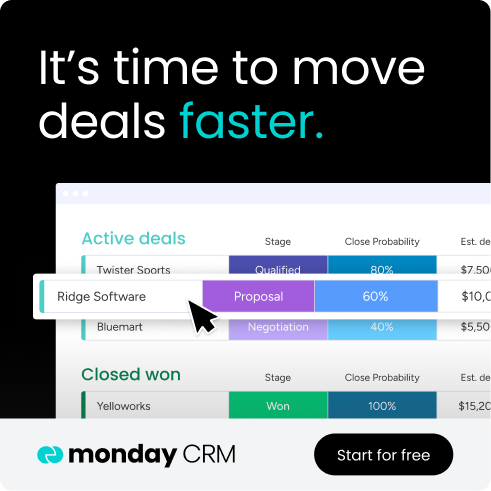Inconsistent client service is a quiet revenue killer. When team members lack a single source of truth for client needs, preferences, and history, small mistakes add up, eroding trust and putting relationships at risk. Without a system, your team spends more time searching for information than building relationships and closing deals.
This is where a standardized client information sheet becomes essential. It is more than just a contact list. It is a strategic document that centralizes everything from communication preferences and billing details to service history, ensuring every team member has the context they need to deliver consistent, personalized service.
This guide walks through how to create and manage client data effectively. We will cover the essential elements to include, a 5-step process for building your own form, and provide several client information sheet templates for different industries. You will also see how a powerful work platform can automate this process, turning static data into actionable insights.
Try monday CRMKey takeaways
- Client information sheets protect revenue and enable team scalability by creating a single source of truth that prevents dropped balls and ensures consistent service delivery.
- Include essential contact details, service preferences, billing information, and consent fields while keeping forms short enough that clients actually complete them.
- Choose your platform based on business size and technical needs — CRM systems offer complete integration while form builders provide advanced features for specific use cases.
- Update client information regularly through systematic reviews during natural touchpoints like contract renewals and project kickoffs to keep data accurate and useful.
- Transform client data collection with monday CRM’s AI-powered automation that creates workflows, assigns projects, and generates actionable insights from your client information.
What is a client information sheet?
A client information sheet is a document that collects and organizes essential details about a client. This means it’s your central place to store contact info, preferences, requirements, and any other data you need to serve that client well.
Think of it as a single source of truth for each client relationship. You might use a customer profile template, digital forms, PDFs, or even paper documents — what matters is having one organized system everyone on your team can access.
Client information sheet vs. intake form
Although these terms are often used interchangeably, there is a subtle difference:
- Client information sheets maintain ongoing relationship data throughout your entire business relationship and include contact details, preferences, service history, and billing information that evolves over time.
- Intake forms capture what you need before starting work with someone new: initial assessments, project requirements, and baseline information for onboarding.
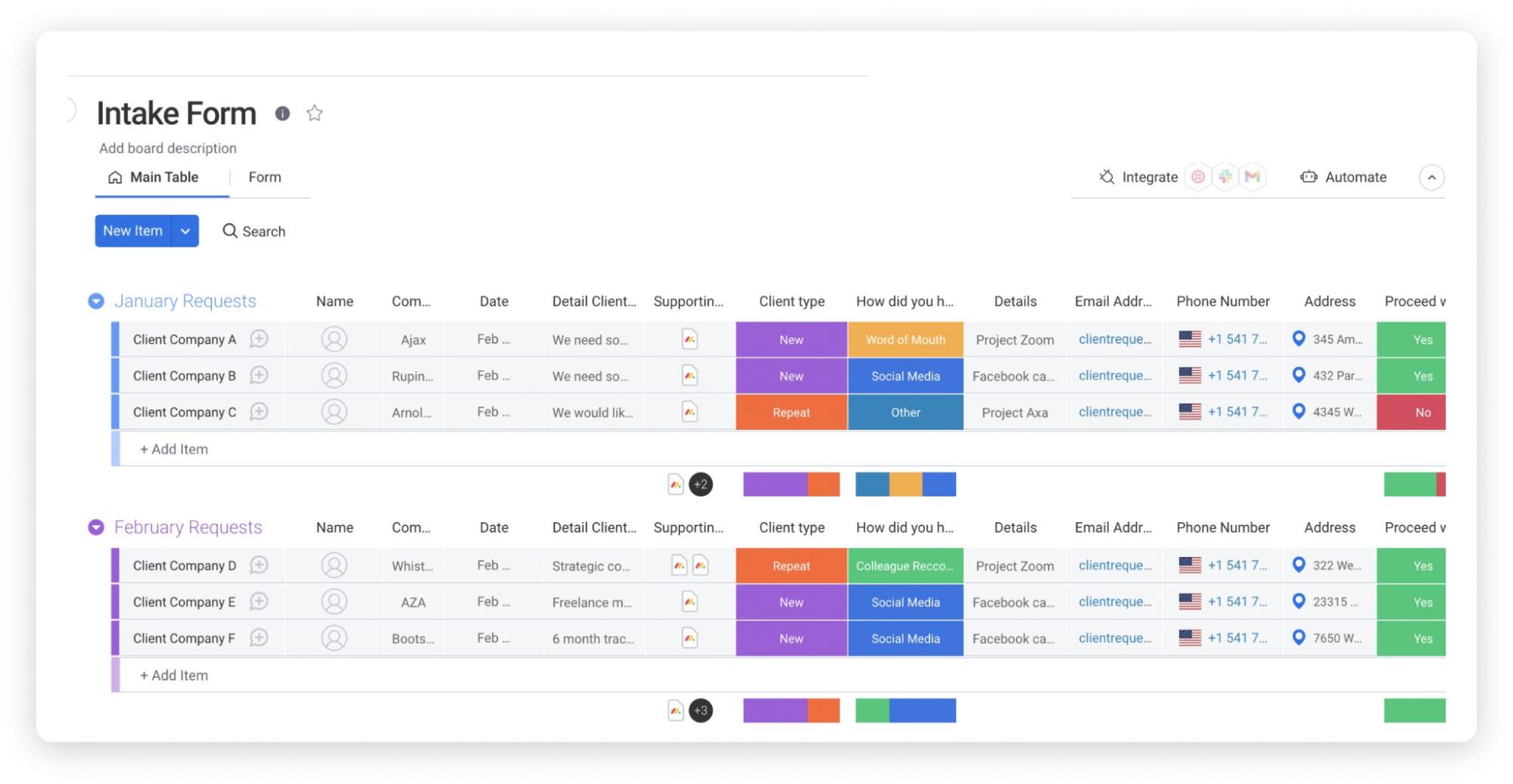
Why every business needs client information sheets
Without organized client data, you’re flying blind. You risk forgetting important details, missing opportunities, or worse — losing clients because someone dropped the ball.
A centralized system for client data does more than just keep you organized; it directly impacts your bottom line and operational scalability. By ensuring every team member has the right information, you build a resilient business and here’s how:
- Revenue protection: When everyone knows client preferences and history, you deliver consistent service that keeps clients happy.
- Team scalability: New team members can get up to speed quickly, accessing all the information they need from a single, reliable source.
- Legal compliance: Many industries require proper documentation of client interactions and consent
- Personalized service: You can tailor offerings and communication when you actually know what clients want
Essential elements to include in your client information form
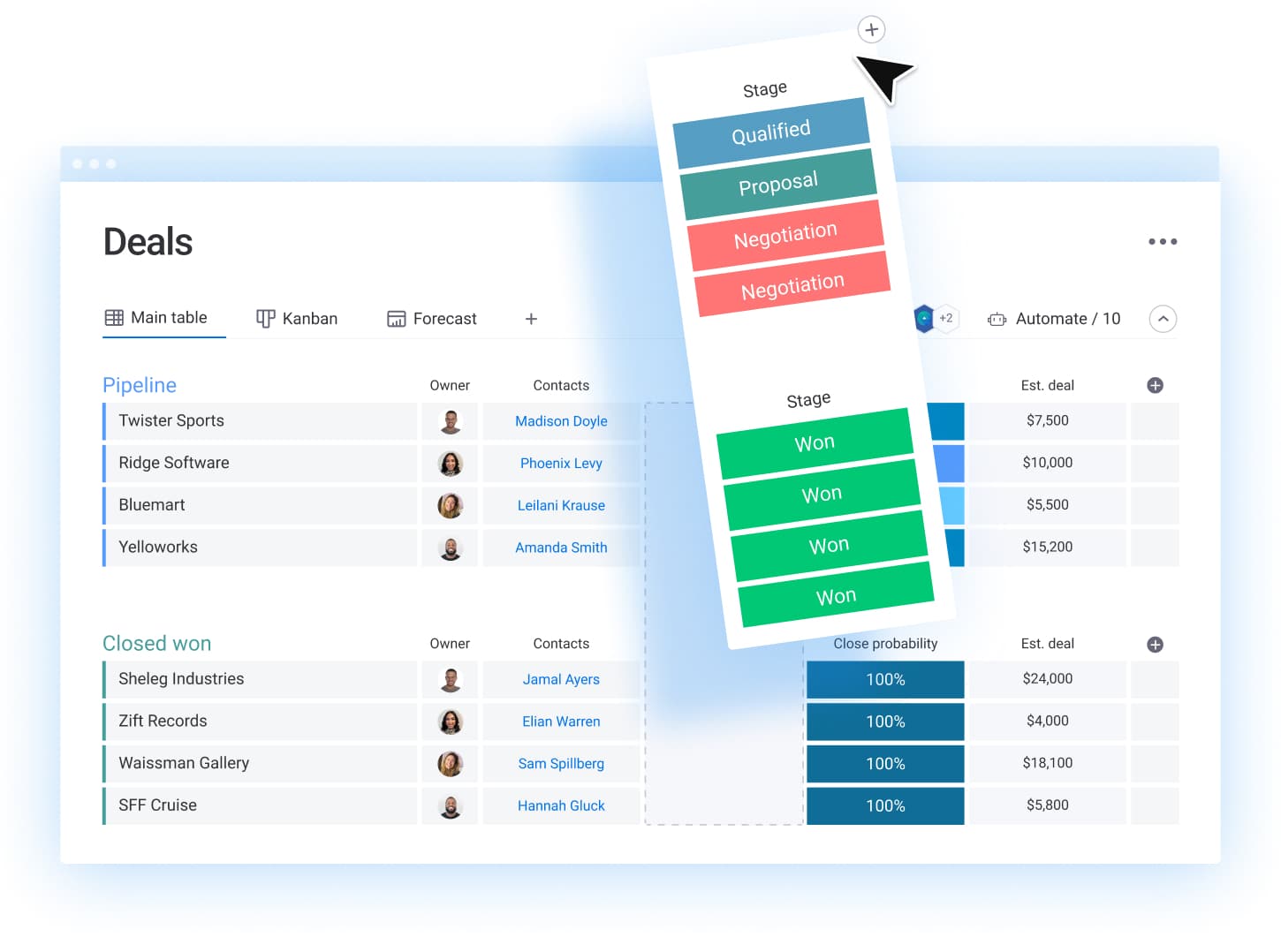
Building an effective client information form means including the right fields — not too many, not too few. The following sections outline the core elements that balance comprehensive data collection with user experience. Each component serves a specific purpose in helping your team deliver better service while keeping the form manageable for clients to complete.
Contact and company details
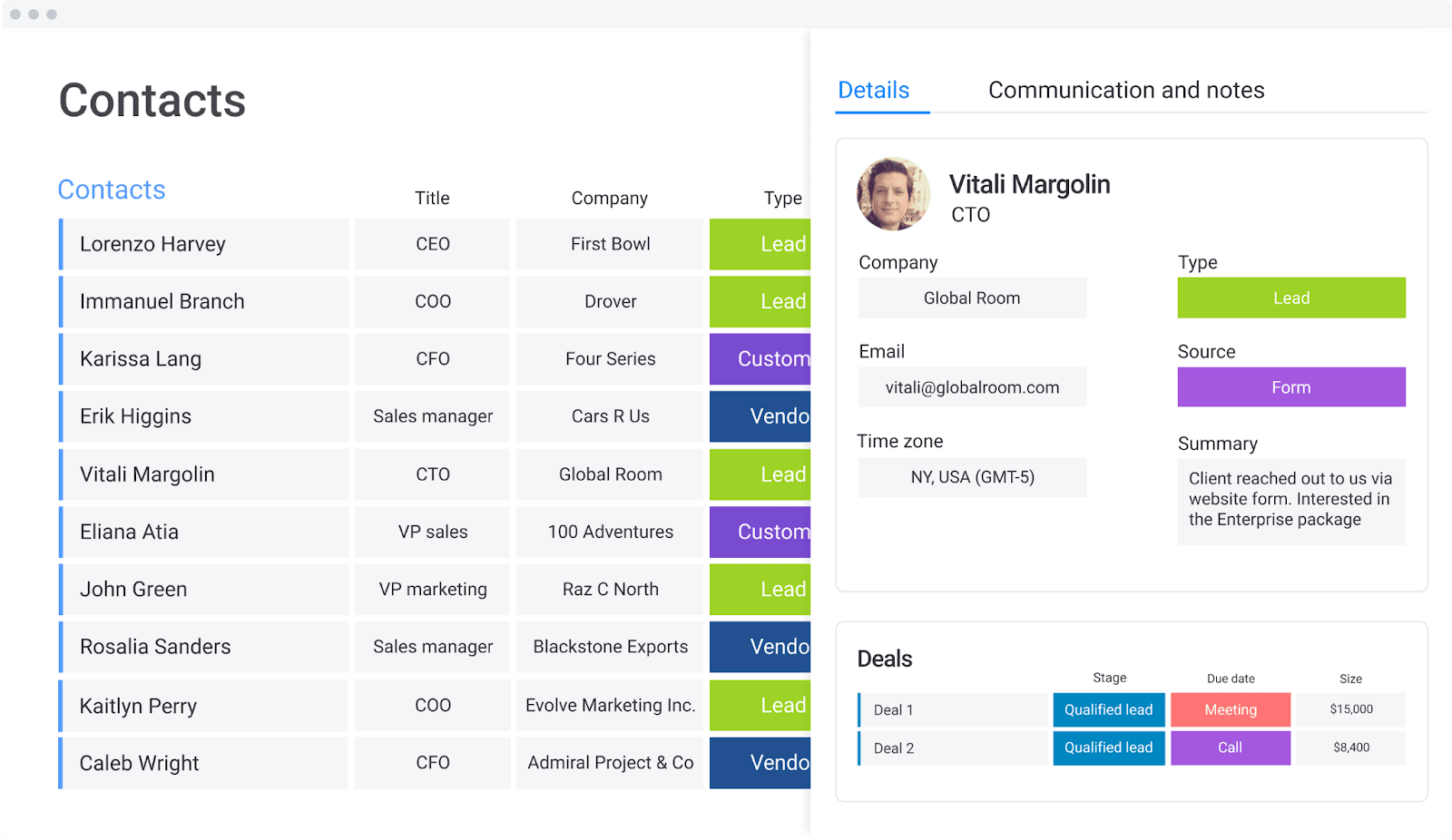
Start with the basics: full names, job titles, company names, and complete contact information. It’s a best practice to capture more than just one contact person.
Capture both primary and secondary contacts. When your main contact is on vacation or leaves the company, you’ll thank yourself for having backup options. Include personal and business contact methods when it makes sense for your industry.
Service preferences and requirements
This is where you capture how clients want to work with you. Document their preferred communication methods, meeting styles, and any special requirements.
Include fields for:
- Communication preferences: Do they prefer email, phone, or text?
- Meeting preferences: Virtual or in-person? Morning or afternoon?
- Service history: What have you done for them before?
- Special requirements: Any unique needs or restrictions?
Billing and payment information
Money conversations get awkward when you don’t have the right information. Capture payment methods, billing addresses, and any special invoicing instructions upfront, possibly leveraging a sales invoice template for streamlined billing.
Don’t forget purchase order requirements and payment terms. Some clients need specific information on invoices or have set payment schedules you need to follow, which is why invoice management software can be invaluable.
Communication and consent fields
Privacy laws mean you need explicit consent for how you use client data, and customers are increasingly expecting it. With younger consumers becoming more aware of privacy laws, including explicit checkboxes for data processing consent and marketing communications is non-negotiable.
Document what clients are comfortable with. Can you add them to your newsletter? Share their success story? Use their data for service improvements? Get it in writing.
How to create a client information sheet in 5 steps
Building an effective client information sheet doesn’t have to be complicated. Follow this straightforward, step-by-step process to create a form that captures what you need while keeping the client experience smooth and professional.
Step 1: Identify your data requirements
Start by mapping out every piece of client information your team uses or wishes they had. Talk to your sales team, account managers, and service delivery folks.
Sort this information into 2 categories:
- Essential fields: What you absolutely need to serve the client
- Nice-to-have fields: What would help but isn’t critical
Remember: Longer forms have lower completion rates. Focus on what directly impacts client relationships or business operations.
Step 2: Select your platform and format
Your technology choice depends on your business size and technical skills. Small teams might use simple form builders or templates. Larger organizations need CRM integration and automation.
Consider these factors:
- Mobile responsiveness: Can clients complete it on their phones?
- Security features: How is sensitive data protected?
- Integration options: Does it connect with your other systems?
- Offline capabilities: Do you need it to work without internet?
Step 3: Design an intuitive layout
Organize your form like a conversation. Start with easy contact information, then move to more detailed business requirements.
Use descriptive section headers so clients know what’s coming, and group related fields together. Choose the right input types: drop-down menus for predefined options, text areas for detailed responses, and so on.
Test your layout with real people before launching, and watch where they get confused or frustrated.
Step 4: Set up validation and automation
Add rules that ensure data accuracy. For example, require essential fields, validate email formats, and use conditional logic to show relevant fields based on previous answers.
Then, set up what happens after submission, such as:
- Confirmation emails: Let clients know you received their information
- CRM records: Automatically create client profiles
- Project assignments: Route new clients to the right team members
- Welcome sequences: Trigger onboarding workflows
Step 5: Test with real clients
Launch with a small group first, monitoring completion rates and gathering feedback about their experience. Track common questions or confusion points, then use these insights to refine field labels, add helpful instructions, or restructure sections that aren’t landing.
Make improvements based on real feedback before rolling out to everyone. This approach prevents widespread issues and ensures your form actually works for clients, not just in theory but in practice.
Try monday CRM7 client information sheets templates by industry
Different industries need different information. A healthcare provider collects very different data than a marketing agency. Here are the types of client information sheets you might build, tailored to specific industries and their unique requirements.
1. General business client template
This template type works for most service businesses. It covers the basics without getting too specific to any one industry.
Consider including contact details, company information, service preferences, billing data, and consent fields. Add project-specific fields based on what you offer.
2. Consulting and professional services
Consultants need deep project understanding, which is where a CRM for freelancers can streamline client interactions and deliverables. Your template should capture project objectives, key stakeholders, budget parameters, and success criteria.
Add fields for approval processes and communication preferences during different project phases. Include previous consulting experience and current challenges.
3. Healthcare and wellness providers
Healthcare forms must meet HIPAA requirements, which is why a HIPAA-compliant CRM is essential for secure client data management. Your template should include patient demographics, insurance information, emergency contacts, and relevant medical history.
Don’t forget accessibility needs and communication preferences for health information. Your platform must meet healthcare security standards.
4. Real estate client information
Real estate involves complex timelines and multiple decision-makers. Build a template that captures buyer or seller status, property preferences, budget ranges, and financing status.
Include fields for family considerations and must-have property features. This helps agents provide targeted recommendations.
5. Financial and tax services
Financial services face strict compliance requirements, which is why a CRM for financial advisors can help you manage data securely. Your template should include identification information, income sources, financial goals, and risk tolerance.
Add all regulatory acknowledgments your jurisdiction requires. For simplified record-keeping, consider a CRM for accountants solution. Document existing financial relationships and investment experience.
6. Creative agency onboarding
Creative projects need brand understanding. Design a template that captures brand guidelines, creative preferences, target audiences, and approval processes.
Include existing brand assets and inspiration sources. This guides initial concept development and reduces revision rounds.
7. B2B enterprise customers
Enterprise clients have complex structures, so a deal tracker can help you stay on top of multi-layer negotiations. Your template should document organizational charts, procurement requirements, technical specifications, and integration needs.
Capture decision-making timelines and budget approval processes. Understanding enterprise complexity helps navigate long sales cycles.
Best practices for managing client information

Your client information sheets are only as valuable as they are secure and accessible. The way you manage this data directly impacts client trust, team efficiency, and legal compliance. Here’s how to build a management system that protects sensitive information while keeping it useful for your team.
Ensure data security and compliance
Security isn’t optional. Implement encryption, access controls, and regular backups. Limit who can see client information based on their job role.
Stay current with privacy regulations, including GDPR if you have European clients, CCPA if your customers are in California, and other relevant industry regulations in healthcare, finance, and other sectors.
Train your team on security practices. Just one careless mistake can damage client trust forever, which is why a CRM with document management can help safeguard sensitive information.
Organize for easy access
Create systems anyone can follow, and use consistent naming conventions and filing structures. Make information searchable by tagging or categorizing clients by:
- Industry type: For targeted communications
- Service level: To ensure appropriate attention
- Relationship stage: New, active, or dormant
Document your system so new team members can find what they need without asking.
Schedule regular updates
Information gets stale fast. Set up systematic reviews to keep data current by building updates into natural touch points, such as:
- Annual reviews: Full information verification
- Project kickoffs: Confirm current contacts and preferences
- Contract renewals: Update billing and service requirements
Pro tip: Use automated reminders so nothing falls through the cracks.
Connect to your tech stack
Isolated data helps nobody, and with 57% of employees reporting an increase in the number of software platforms used compared to the previous year, according to monday.com’s 2024 world of work report, the problem of data silos is only getting worse.
Integrate client information with your client management system, email marketing, accounting, and project management systems. When systems talk to each other, your team works faster and makes fewer mistakes.
5 types of platforms for building client information forms
Choosing the right platform for your client information forms shapes how efficiently your team works and how smoothly clients experience your onboarding process. The technology you select should match your business size, technical capabilities, and integration needs.
From comprehensive CRM systems that handle everything in one place to specialized form builders with advanced features, each of the following platform types offers distinct advantages:
| Platform type | Best for | Key strengths | Integration capabilities |
|---|---|---|---|
| CRM systems with form builders | Growing businesses | Centralized data, automation | High (e.g., monday CRM) |
| Dedicated form creation platforms | All business sizes | Advanced form features, flexibility | Moderate to high |
| Document management solutions | Regulated industries | Offline/physical forms, signatures | Moderate |
| Automation-first platforms | Tech-savvy teams | Workflow automation, integrations | High |
| Traditional spreadsheet apps | Small/startup teams | Simplicity, low cost | Low to moderate |
1. CRM systems with form builders
CRM platforms give you the complete package. They collect data, manage relationships, and automate workflows in one place, which is why exploring different CRM industries matters for finding the right fit.
A great example is monday CRM, where you can build forms that automatically update client records, trigger tasks, and generate insights. This keeps all your data synced automatically between systems.
2. Dedicated form creation platforms
Form builders like Typeform or Jotform create engaging experiences. They offer advanced logic, payment processing, and detailed analytics.
The downside? You’ll need to connect them to other systems for full functionality. Consider total costs including integration time.
3. Document management solutions
PDF forms work when you need signatures or offline access and are common in regulated industries with strict document requirements. But they create manual work, so someone has to enter that data into your systems later.
4. Automation-first platforms
Platforms like Zapier connect everything, excelling at complex workflows between multiple systems. Unfortunately, the learning curve is steep, so they’re best for teams with technical skills or dedicated IT support.
5. Traditional spreadsheet applications
Spreadsheets are simple and cheap. They work for basic data collection when you’re just starting out, but you’ll quickly outgrow them because they lack automation, have limited security, and offer painful collaboration at scale.
Try monday CRMTransform client data collection with monday CRM

Managing client information doesn’t have to mean juggling forms, spreadsheets, and disconnected systems. With monday CRM, you get everything in one place, solving the common headaches of client information management while keeping your team aligned.
The platform connects data collection directly to project management and communication tracking, acting as a lead management software solution for your growing pipeline. Your client information transforms into actionable intelligence rather than sitting as static data.
Create intelligent client forms with AI
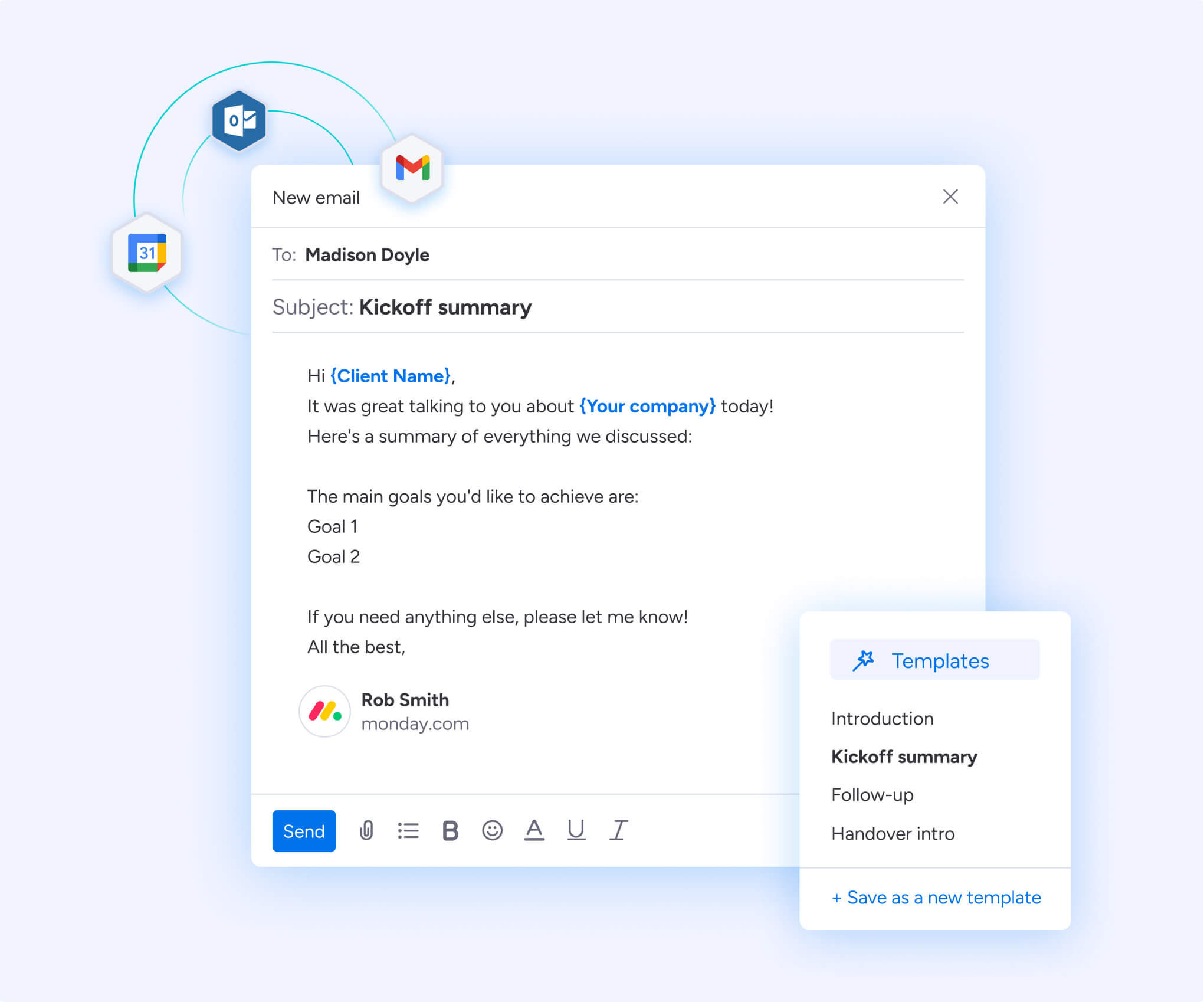
AI is transforming how teams handle client data, a shift that’s already well underway in key departments. According to the world of work report, 77% of marketing and 86% of IT professionals are already using AI. With AI Blocks in monday CRM, you can pull key details from uploaded documents automatically, eliminating manual data entry.
The Custom Block understands plain language requests, so you can simply tell it to “categorize new clients by industry and assign the right account manager,” and it builds that workflow for you.
AI-powered features include:
- Automatic categorization: Sort clients by type, urgency, or value.
- Sentiment detection: Spot unhappy clients before they leave.
- Smart extraction: Pull data from PDFs and documents instantly.
Automate information workflows
When a client submits information, the platform springs into action, creating project boards, assigning team members, sending welcome messages, and scheduling follow-ups — all automatically.
You can build conditional workflows that adapt to different client types, ensuring enterprise clients get different onboarding than small businesses while everyone receives the right experience.
Connect to your existing systems and watch client data flow seamlessly to email marketing, accounting, and other platforms without manual work.
Centralize all client data
Everything about a client lives in one place. Contact information sits alongside project history, communication records, and notes from every interaction, giving your team complete context at a glance.
Custom dashboards show relationship health instantly, helping you spot opportunities, identify risks, and make decisions based on complete information.
Permission controls ensure team members see only what they need, so sales views different information than accounting, keeping data secure across departments.
Generate insights from client information
Turn raw data into business intelligence by tracking where clients come from, what services they prefer, and what makes relationships succeed or fail.
The platform’s dashboards help you visualize patterns you’d miss in spreadsheets. You can see which client types are most profitable, identify service gaps, and predict future needs based on historical trends.
These insights drive growth by showing you exactly where to focus efforts for maximum impact.
Start building better client relationships today
Client information sheets are more than administrative tools — they’re the foundation of scalable, personalized service that protects revenue and builds lasting relationships. When you centralize client data in one accessible system, you eliminate the guesswork, reduce errors, and empower your team to deliver consistent experiences that keep clients coming back.
The right platform makes all the difference, and monday CRM transforms static client forms into dynamic intelligence that drives your business forward. With AI-powered automation, seamless integrations, and actionable insights built in, you’ll spend less time managing data and more time growing relationships.
Ready to see the difference? Try monday CRM and transform how you collect and use client information.
Try monday CRMFAQs
What is the difference between a client information sheet and a client intake form?
The main difference between a client information sheet and a client intake form is their purpose and timing. A client information sheet maintains ongoing relationship data throughout your entire business relationship with a client and is updated regularly. In contrast, an intake form captures initial assessment information needed before starting work and is typically a one-time document.
How often should client information sheets be updated?
Client information sheets should be reviewed at least once per year or whenever major changes occur in the client's business. Many businesses update them during contract renewals, quarterly reviews, or project milestones to ensure accuracy.
What client details are legally required to collect?
Legal requirements vary by industry and location but typically include basic identification and consent for data processing. Healthcare providers must collect HIPAA-required information while financial services need different compliance data. Consult legal counsel for your specific requirements.
What is the most secure way to store client information sheets?
Digital storage with encryption, access controls, and regular backups provides the highest security level. Choose platforms with enterprise-grade security features and compliance certifications for your industry. Avoid storing sensitive data in basic spreadsheets or unsecured documents.
How can businesses ensure clients complete information sheets accurately?
Design forms with clear instructions, logical flow, and validation rules that catch errors. Use conditional logic to show only relevant fields and provide helpful examples. Keep forms as short as possible while still collecting essential information.
What should businesses do with outdated client information?
Archive outdated client information according to your data retention policy while keeping active records current. Create systematic processes to identify stale data and update it before it causes service issues or compliance problems.
 Get started
Get started 


